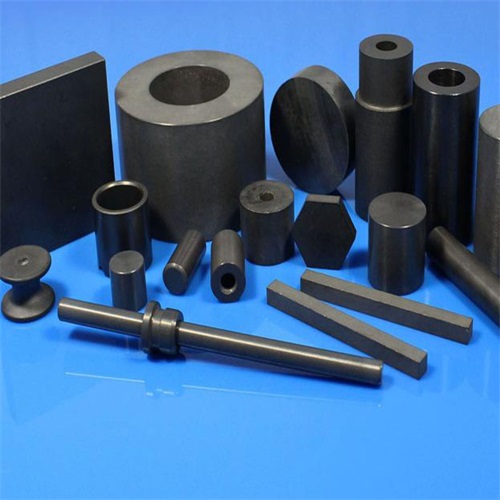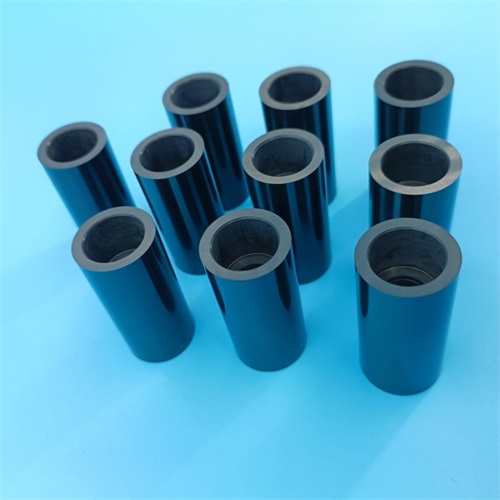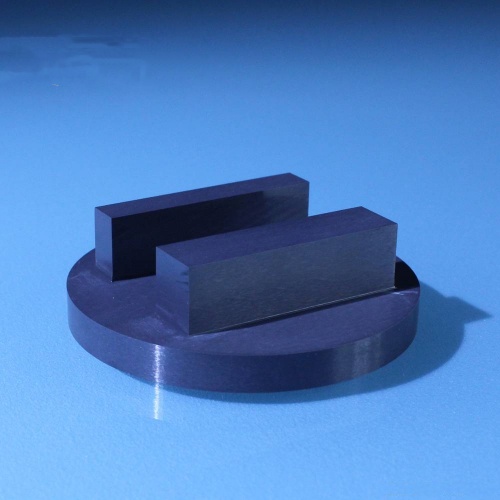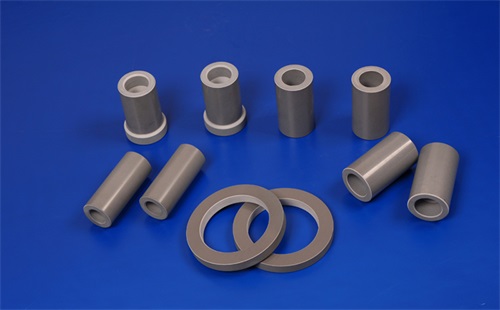What material does silicon nitride ceramic belong to
Silicon nitride ceramics, as a new type of advanced ceramic material, are gradually demonstrating their excellent performance and wide application prospects in multiple industrial fields.
Basic characteristics of silicon nitride ceramics
Silicon Nitride Ceramics is an inorganic material made by synthesizing high-purity silicon nitride powder through high-temperature and high-pressure processes. Its chemical formula is Si3N4, which is a covalent compound. The basic structural unit is a [SiN4] tetrahedron, with silicon atoms located at the center of the tetrahedron and four nitrogen atoms located at the four vertices of the tetrahedron. These tetrahedra, in the form of sharing one atom every three, form a continuous and robust network structure in three-dimensional space, endowing silicon nitride ceramics with a series of excellent properties such as high strength, low density, and high temperature resistance.
Silicon nitride ceramics have extremely high hardness, slightly inferior to diamond, while also possessing excellent properties such as high strength, high toughness, low density, high temperature resistance, corrosion resistance, oxidation resistance, low specific gravity, and thermal shock resistance. These characteristics make silicon nitride ceramics one of the most comprehensive structural ceramic materials currently available, hailed as “versatile ceramics”, “black ceramic steel”, and “the pearl on the crown of advanced ceramic materials”.

Types of silicon nitride ceramics
According to the structure, synthesis method, morphology, etc. of silicon carbide, silicon nitride ceramics can be subdivided into various types, including silicon nitride fibers, nano silicon nitride, silicon nitride composite materials, silicon nitride thin films, and silicon nitride ceramic balls. Each type has its unique performance and purpose:
Silicon nitride fiber: With high performance, high yield, chemical corrosion resistance, and high temperature resistance, it is an ideal candidate material for high-temperature resistant components such as aerospace and automotive engines.
Nano silicon nitride: It has high tear strength, tensile strength, wear resistance, and can reduce internal friction, improve the dynamic mechanics and heat aging resistance of rubber. It can be used to make ceramics, engine components and cutting tools, or as a material for corrosion resistance and electromagnetic fields.
Silicon nitride composite material: It has characteristics such as high temperature resistance, low dielectric, and creep resistance, and is commonly used to make antenna covers for high-performance missiles with anti-oxidation properties.
Silicon nitride thin film: It has excellent optoelectronic properties, high chemical stability, and strong resistance to impurity diffusion and water vapor penetration.
Silicon nitride ceramic ball: With high hardness, high wear resistance, corrosion resistance, high temperature resistance, light weight, high processing accuracy, self-lubricating properties, insulation properties and other characteristics, it is the preferred material for ceramic bearings and hybrid ceramic ball bearings.

Preparation methods of silicon nitride ceramics
The preparation methods of silicon nitride ceramics mainly include reaction sintering, hot pressing sintering, atmospheric pressure sintering, atmospheric pressure sintering, etc. Silicon nitride ceramics obtained by different preparation methods have different microstructures and properties:
Reaction sintering method: First, silicon powder is pressed into the desired shape of green body, and pre nitrided sintering treatment is carried out in a nitriding furnace, so that some silicon powder reacts with nitrogen to generate silicon nitride. This method has a lower cost but longer nitriding time, making it suitable for manufacturing parts with complex shapes and precise dimensions.
Hot pressing sintering method: Silicon nitride powder and a small amount of additives (such as MgO, Al2O3, etc.) are hot pressed and sintered under high pressure (above 1916 MPa) and high temperature (above 1600 ℃). The silicon nitride ceramics produced by this method have excellent mechanical properties, high strength, and high density, but high manufacturing costs and complex sintering equipment.
Atmospheric pressure sintering method: Sintering is carried out at lower pressure (usually at 1 atm) and higher temperature (1700, 1800 ℃), followed by pressure sintering at higher temperatures (1800, 2000 ℃). The performance of silicon nitride ceramics obtained by this method is slightly lower than that of hot pressing sintering method, but the cost is lower.
Pressure sintering method: Sintering is carried out under high nitrogen pressure (1-10MPa) and temperature (around 2000 ℃). This method can suppress the high-temperature decomposition of silicon nitride, promote the densification of ceramic structure, and improve the strength of ceramics.

Application fields of silicon nitride ceramics
Silicon nitride ceramics have been widely used in various fields due to their excellent properties:
Mechanical industry: used to produce key components such as cutting tools, ceramic bearings, turbine rotors, etc., to improve the wear resistance, high temperature resistance, and service life of mechanical equipment.
The automotive industry has a wide range of applications in engine components such as valves, rocker arm gaskets, seals, turbine blades, welding fixtures, etc., opening up a new era for the development of new high-temperature structural materials.
Aerospace: Used to make high-temperature structural components and anti-oxidation layers for spacecraft, improving the spacecraft’s high temperature resistance and anti-oxidation properties.
Electronic industry: used to produce electronic device packaging materials such as heat dissipation substrates, insulation rings, cover plates, and components in semiconductor process equipment.
Biomedical: It is used as a human implant material due to its good biocompatibility, bone conductivity, and affinity with biological tissues such as cells.

Silicon nitride ceramics, as a new type of inorganic material with excellent comprehensive performance, have shown wide application prospects and enormous development potential in multiple fields.
PREVIOUS:What are the material properties of silicon nitride ceramics
NEXT:What are the performance differences between aluminum nitride ceramics and silicon nitride ceramics
CATEGORIES
LATEST NEWS
- What are the mechanical pro...
- Thermal properties of zirco...
- What properties should be c...
- What are the mechanical pro...
- What are the main advantage...
- What is Macor processable g...
- The material properties and...
- The reason for the high pri...
- What are the preparation me...
- Why modify aluminum nitride...
